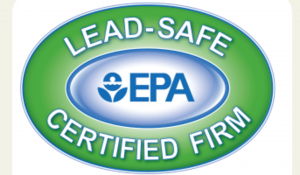
Why EPA Lead Paint Certification Matters: Protecting Clients, Workers, and Reputations with RRP Compliance
Gulf 52, based in Hammond, Louisiana, holds active EPA Lead Paint / RRP Certification. The company remains committed to lead-safe work practices and regulatory compliance, ensuring each project minimizes health risks and meets federal standards. President Earl Carr, Jr. emphasizes that certification is not just a technical requirement but a reflection of a company’s values.
“Being certified under the RRP Rule means more than just following protocol. It means understanding the risk lead poses and taking every step necessary to prevent harm to clients, workers, and the surrounding environment,” said Carr.
Understanding the RRP Rule
The RRP Rule, enforced by the EPA, applies to contractors who perform renovation, repair, or painting activities that disturb painted surfaces in pre-1978 buildings. This includes a wide range of work such as window replacement, sanding, cutting, and demolition.
The rule requires firms to be certified and for individuals performing the work to be trained in lead-safe work practices. It also mandates that specific containment, cleanup, and recordkeeping procedures be followed.
Lead paint, once widely used, is now recognized as a serious health hazard—especially for children and pregnant women. Even small amounts of dust generated from disturbing lead-based paint can lead to developmental delays, learning difficulties, and long-term health complications. RRP compliance helps prevent exposure during common renovation and repair work.
Legal and Financial Implications
Operating without RRP certification can lead to severe penalties. The EPA has the authority to impose substantial fines on firms and individuals who fail to comply with the rule. Legal consequences extend beyond fines, potentially including lawsuits from affected clients or employees if exposure is linked to negligence.
Beyond enforcement, lack of certification can damage a company’s reputation. Homeowners, municipalities, and commercial property owners increasingly require proof of certification before awarding renovation contracts. Certified firms signal professionalism, reliability, and commitment to health and safety standards.
For companies operating in the residential and light commercial sectors, especially in regions with older housing stock like Southeast Louisiana, the certification provides a necessary layer of protection. It ensures crews understand containment methods, disposal requirements, and proper communication with property owners about potential lead hazards.
Protecting Workers and Clients
RRP compliance is not only about meeting a federal mandate—it also serves as a frontline defense for crews working in potentially hazardous environments. Workers trained in lead-safe practices know how to contain dust, wear proper protective equipment, and clean up job sites to prevent cross-contamination.
Clients benefit from these protocols as well. In occupied homes, child care centers, or schools, lead-safe practices reduce the risk of toxic dust spreading into living or learning spaces. These measures help preserve indoor air quality and limit exposure long after the renovation work is complete.
In homes built prior to 1978, the presence of lead paint is likely, even if it is no longer visible. Painted surfaces on windows, trim, doors, and older walls may contain layers of lead-based paint beneath newer coatings. Disturbing these areas without proper training can release dust that settles into carpets, ventilation systems, or soil outside the home.
Certification as a Business Standard
Companies that prioritize EPA certification demonstrate an understanding of both the technical and ethical aspects of renovation work. For Gulf 52, being RRP certified represents a baseline for operating responsibly, especially in a market that includes older structures and family-occupied homes.
This commitment helps reduce risk for clients and ensures projects can proceed without delay due to non-compliance. As building codes and regulations become stricter, certified firms are better positioned to meet evolving expectations from regulators and customers alike.
Certifications also serve as a foundation for ongoing training. The lead-safe practices taught in RRP training contribute to a safety-conscious workforce that can handle other hazardous materials with care and attention to detail.
The Role of Lead-Safe Practices in Southeast Louisiana
In parishes across Southeast Louisiana, many homes and buildings were constructed well before 1978. This includes single-family residences, duplexes, schools, and community centers. Contractors working in this region face a higher probability of encountering lead-based paint during renovation or repair jobs.
Local governments and preservation groups often maintain records of historical structures, increasing the likelihood that certified contractors will be selected for permitted work in older districts. With certification comes the ability to work legally, responsibly, and confidently in these environments.
Closing Statement
EPA Lead Paint / RRP Certification is more than a checkbox on a contractor’s license—it is a critical safeguard for public health and professional integrity. Certified firms reduce liability, protect clients and workers, and support safer renovation practices across the construction industry.
In a region where older buildings and family homes are part of the landscape, RRP certification ensures that each renovation project is done with care, caution, and respect for those who live and work in the spaces being improved.
Morgan Thomas
Rhino Digital, LLC
+1 504-875-5036
email us here
Visit us on social media:
Facebook
Distribution channels: Building & Construction Industry, Culture, Society & Lifestyle, Real Estate & Property Management
Legal Disclaimer:
EIN Presswire provides this news content "as is" without warranty of any kind. We do not accept any responsibility or liability for the accuracy, content, images, videos, licenses, completeness, legality, or reliability of the information contained in this article. If you have any complaints or copyright issues related to this article, kindly contact the author above.
Submit your press release

